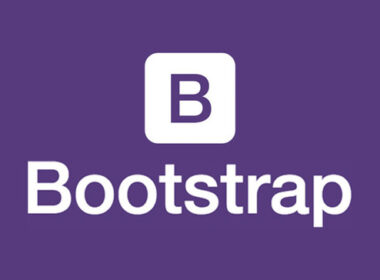
Transforming WordPress Themes with Bootstrap: A Designer’s Guide
One of the most powerful tools available to web designers today is Bootstrap, a popular front-end framework that allows for therapid development of responsive and mobile-friendly websites. By combining Bootstrap with WordPress themes, designers can take their websites to the next level in terms of design and functionality. In this guide, we will walk through the process of transforming WordPress themes with Bootstrap, giving designers the tools they need to create stunning websites that are both beautiful and easy to navigate.
Understanding Bootstrap and WordPress Themes
Before diving into the process of transforming WordPress themes with Bootstrap, it’s important to have a solid understanding of both of these tools. Bootstrap is a front-end framework developed by Twitter that provides a grid system, pre-built components, and responsive design capabilities. WordPress, on the other hand, is a content management system that allows for the creation and management of websites.
When combining Bootstrap with WordPress themes, designers can take advantage of Bootstrap’s grid system to create responsive layouts, as well as its pre-built components to add features such as navigation bars, forms, and buttons. By understanding how these tools work together, designers can create websites that are visually appealing, user-friendly, and functional.
Customizing WordPress Themes with Bootstrap
Once you have a solid understanding of Bootstrap and WordPress themes, the next step is to start customizing your WordPress theme with Bootstrap. One way to do this is by creating a child theme, which allows you to make changes to your theme without affecting the original theme files.
To customize your WordPress theme with Bootstrap, you can start by adding the Bootstrap CSS and JavaScript files to your theme. This will give you access to Bootstrap’s grid system and components, allowing you to create a layout that is both responsive and visually appealing.
You can also use Bootstrap’s classes and utilities to style your theme elements, such as buttons, forms, and navigation bars. By using Bootstrap’s classes, you can easily customize the appearance of your theme without having to write extensive CSS code.
Adding Bootstrap Features to WordPress Themes
In addition to customizing the appearance of your WordPress theme with Bootstrap, you can also add Bootstrap features to your theme to enhance its functionality. For example, you can use Bootstrap’s carousel component to create a slideshow on your website, or its modal component to create pop-up windows.
By adding Bootstrap features to your WordPress theme, you can create a more dynamic and interactive website that will engage users and keep them coming back for more. Bootstrap’s components are easy to implement and can be customized to fit the design of your theme, making it a powerful tool for designers looking to take their websites to the next level.
Conclusion
Transforming WordPress themes with Bootstrap is a great way to create visually appealing, user-friendly websites that are both responsive and functional. By combining the power of Bootstrap with the flexibility of WordPress themes, designers can create websites that stand out from the competition and provide users with a seamless browsing experience.
In this guide, we have covered the basics of Bootstrap and WordPress themes, as well as how to customize themes with Bootstrap and add Bootstrap features to WordPress themes. By following these steps, designers can create websites that are not only beautiful, but also easy to navigate and provide a great user experience.
Transforming WordPress themes with Bootstrap is a valuable skill for any web designer looking to create modern, responsive websites that are both visually appealing and user-friendly. By mastering the art of Bootstrap, designers can take their websites to the next level and create a strong online presence for their clients.
The main benefit of using Bootstrap to build WordPress themes is that it provides a robust, responsive, and customizable front-end framework. Bootstrap’s pre-built components and grid system make it easier to create visually appealing and mobile-friendly WordPress themes. It also allows designers to quickly prototype and iterate on theme designs.
Converting an existing HTML/CSS template into a WordPress theme using Bootstrap can range from relatively straightforward to more complex, depending on the template’s structure and the level of customization required. The key steps typically involve: 1) Setting up the WordPress theme structure and files, 2) Integrating the Bootstrap CSS and JavaScript, 3) Mapping the HTML template content to WordPress template tags and loops, and 4) Customizing the design and functionality to fit the WordPress ecosystem.
Some common challenges include: 1) Ensuring the Bootstrap styles and scripts are properly enqueued and integrated with WordPress, 2) Adapting the HTML template structure to work with WordPress’ template hierarchy, 3) Maintaining compatibility with WordPress’ built-in features and functionality, 4) Customizing Bootstrap components to match the desired design, and 5) Ensuring the theme is accessible and SEO-friendly.
Designers can customize Bootstrap components in several ways: 1) Overriding the default Bootstrap CSS with custom styles, 2) Using SASS/LESS to create custom Bootstrap variable values and mixins, 3) Selectively importing only the Bootstrap components needed, and 4) Leveraging WordPress theme customizer options to allow end-users to adjust colors, typography, and other design elements.
Yes, some best practices include: 1) Properly enqueuing and versioning the Bootstrap assets, 2) Avoiding direct modification of the Bootstrap source files, 3) Utilizing WordPress’ built-in functions and hooks to integrate Bootstrap seamlessly, 4) Ensuring the theme is accessible and follows WordPress coding standards, and 5) Providing clear documentation and customization options for end-users.
